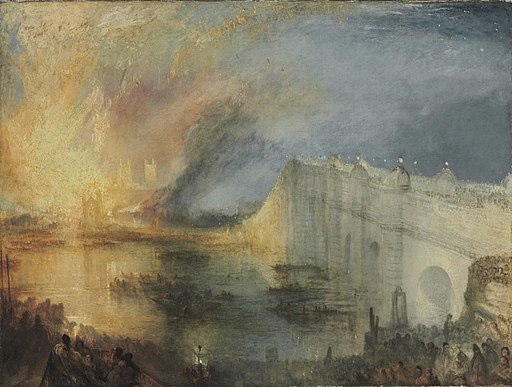 |
| Die Kornernte (1564) by Pieter Breugel the Elder (1526 - 1569) (a.k.a. The Harvesters / The corn harvest / The grain harvest) Oil on wood, Overall, including added strips at top, bottom, and right, 46 7/8 x 63 3/4 in. (119 x 162 cm); original painted surface 45 7/8 x 62 7/8 in. (116.5 x 159.5 cm) Location: Metropolitan Museum of Art |
Paintings of the Corn Harvest in August
The most famous painting of a corn harvest is that shown at the top of this post.
What do we know about 'The Corn Harvest'?
- This painting was painting by Pieter Bruegel the Elder in 1564, when he was nearly 40 years old - some 4 years before he died in 1569.
- It's one panel in a famous series of six paintings by Bruegel called "The Months". These paintings each different times of the year. This is the fourth panel in the series and represents late summer (July/August). See also other paintings in the series which have featured on this blog.:
- Winter Landscape: Hunters in the snow by Pieter Bruegel the Elder
- Breugal "The Return of the Herd" (Autumn Landscape #12)
- The "Months" series were commissioned by Niclaes Jongelinck and were used as a frieze for a room in his home. Jongelinck was a merchant, tax collector and art collector who lived in Antwerp
- The painting is a view of "what is" in terms of real life. There's no sense of a need for a religious story or pretext for painting the landscape. The emphasis is on realism rather than the religious. This is the case with all the paintings in the series - which is why Bruegel's landscape paintings are said to represent a watershed in the history of Western Art.
- The landscape is a dominant theme within the painting - but it's animated by the people who populate the picture plane. The painting focuses on the harvest - the harvesters are in the foreground, their community, their church and nature in general are in the background. The workers in the field are depicted in a naturalistic way - they are shown working, exhausted, lying or sitting, eating or sleeping. As with all other paintings in this series there is a dominant colour - in this instance it's the yellow of the grain crop being harvested.
- This painting now resides in the Metorpolitan Museum of Art in New York (Other paintings in the Months series are located in the Kunsthistorisches Museum, Vienna, and Lobkowicz Collection, Prague)
The meaning of corn
"Corn" means different things in different countries.
- In the USA the term refers to maize (i.e. sweet corn)
- however in Europe, the older use of the word "corn" relates to grain and cereal crops - such wheat, oats and barley (ie maize is called maize and corn on the cob is called corn on the cob!). That's because Europeans didn't have a name for the maize crop when they first encountered it in the New World. So it acquired the generic name for all grain crops!
Here's the definition of corn from Cambridge Dictionaries online
B1 [U] UK (the seeds of) plants, such as wheat, maize, oats, and barley, that can be used to produce flour:a sheaf of corngrains of corn› [U] US the seeds of the maize plant, or the plant itself

























